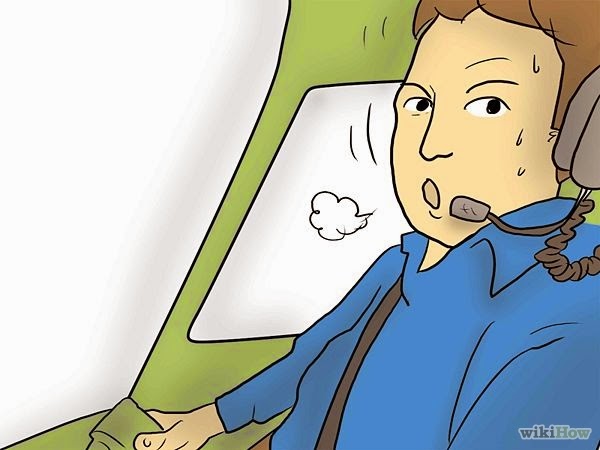From an accident report.
After a short discussion the pilot then stated he was going to divert, and he began a left turn to return to Tulsa, Oklahoma. Soon after beginning the left turn the helicopter impacted trees and terrain at a surface elevation of about 850 feet msl...
He put the aircraft into a standard-rate turn to the right, still climbing, and as things settled down he leaned over to change the frequency on the radio. This required him to put his head down for a few seconds. It took him two tries to roll in the frequency - why was everything so hard to do? He pressed the flip-button to move the frequency into the active-field and looked up to the instruments.
"HOLY SHI...!" As his head came up in the turn, he accelerated the fluid in the three semi-circular canals in his inner ear in different directions. He had an overpowering sense that the aircraft was rolling, pitching, and yawing - all at once. He tried to look at his instruments but his eyeballs were jerking laterally in his head. He had a sudden urge to throw up....
A thought for your consideration...
We should be extremely careful during a turn to avoid weather (clouds, heavy rain) or to exit it. Especially at night. Most IIMC procedures call for a turn only to avoid known obstacles, for good reason. Transitioning to instrument flight is harder than we remember if it has been a while. Climbing or flying straight ahead lets us get our cross-check going and lets things (and us) settle down.
What we absolutely DO NOT want to do during a turn is let our attention be divided or distracted, and under no circumstances should we put our head down to change a radio frequency or change GPS settings or destination (as in direct-to back to base). Doing this - putting our head down in a turn - causes trouble when we rotate it back up to the head-up position.
We accelerate the fluid in our 3 semi-circular canals in different directions and this causes disorientation (the coriolis illusion) and - in severe instances - nystagmus. When we hear of pilots losing control of aircraft after entering clouds or other weather, or flying them into the earth, this is what we think of. He or she was trying to do too many things too quickly when all that is required is to fly the aircraft...
We accelerate the fluid in our 3 semi-circular canals in different directions and this causes disorientation (the coriolis illusion) and - in severe instances - nystagmus. When we hear of pilots losing control of aircraft after entering clouds or other weather, or flying them into the earth, this is what we think of. He or she was trying to do too many things too quickly when all that is required is to fly the aircraft...
If your aircraft has an autopilot, and it has a go-around button (perhaps on the collective) that rolls you wings level and puts you into a climb-speed attitude after it is pressed, and all you have to do is pull collective for climb...
Life is good.



No comments:
Post a Comment
Tell us what you think. If you are involved in helicopter emergency medical services / air ambulances, this is your community. Please refrain from posting profanity, or comments that might be considered libelous or slanderous.